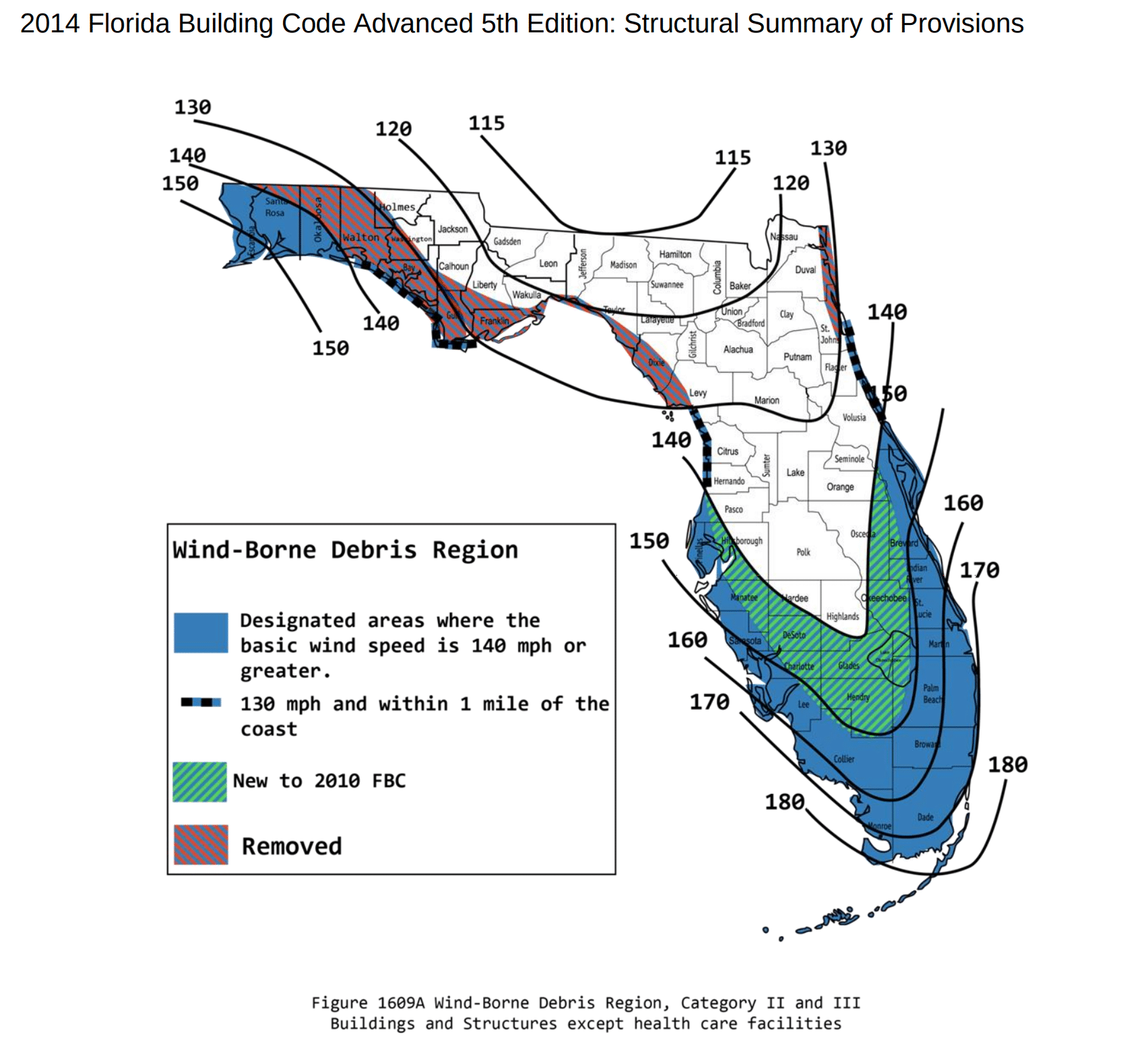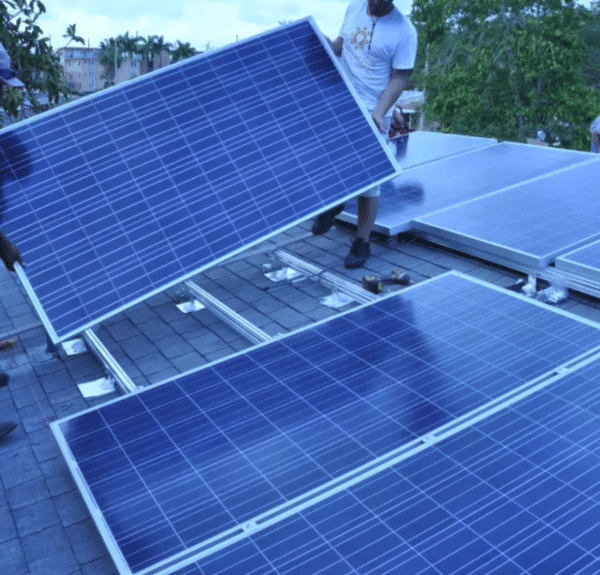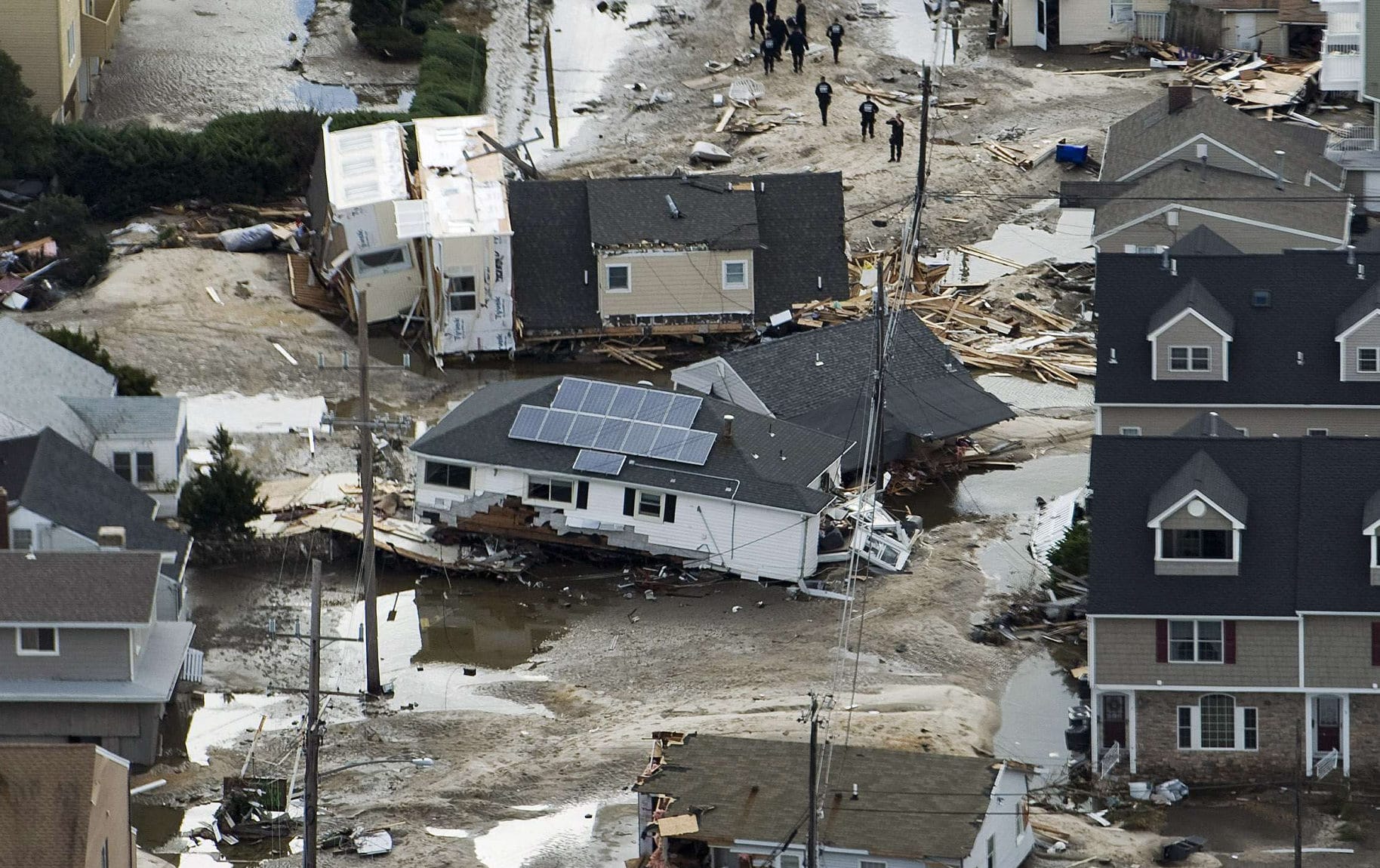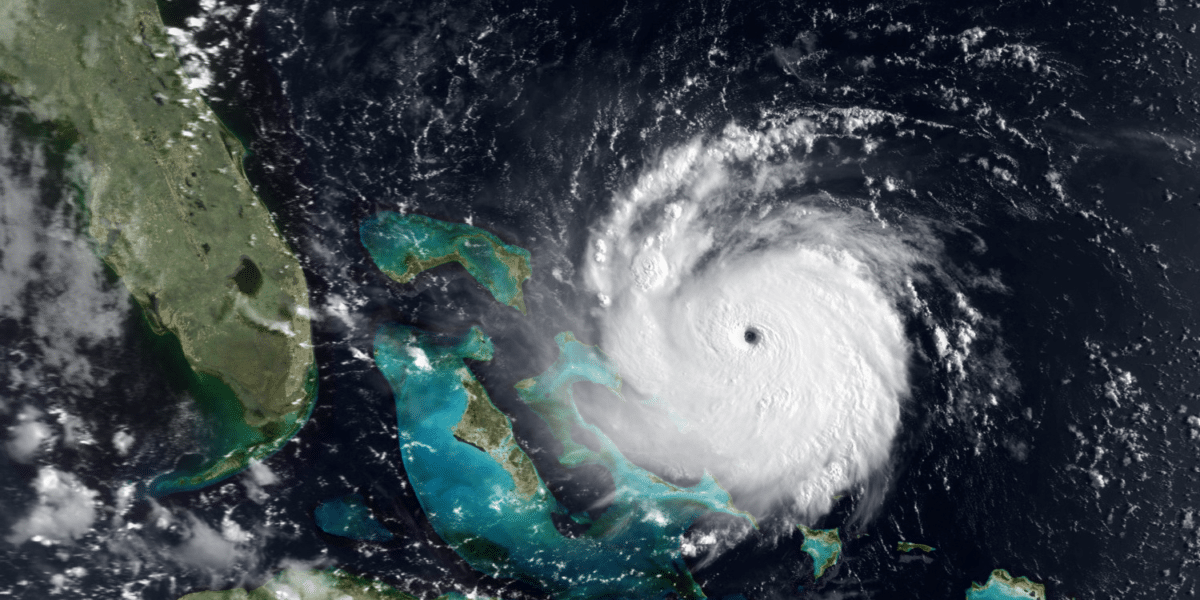In the late summer of 1992, we were told to stay awake and watch the television as long as we could because a big storm was coming and we might need to leave home quickly. For us – about 75 miles north, only trees fell. However, further south, Hurricane Andrew caused massive damage and set in motion the nation’s most aggressive construction requirements – the Miami-Dade Building Code. Such construction nuances as literally strapping the roof structure to the main home and nails with little spikes sticking out of their sides that increase their grip came to be. When it comes to solar construction, the Federal Emergency Management Agency points out the literal tightening of bolts to their appropriate torque value is the most valuable structural installation labor you can do.

What also came to be were greater lift requirements – the highest values on the continental United States – that were driven by higher wind speed considerations (above image). Note the swath of land between the 160 and 170 mile per hour lines – multiple millions of people live there.
The Florida Department of Business and Professional Regulation (DBPR) has given QuickMount PV approval for its full line of L-Mount and QBase Mount solar mounting and racking hardware – they are the first solar racking company to gain this certification. This certification’s greatest benefit is that it allows for a faster permitting process for solar installers in the state. The process to gain the certification includes lab testing that verifies certain minimum standards to meet specific rain and wind requirements for building materials in Florida.
The below image is from a 2015 residential installation in Miami-Dade county – note the third rail of racking material. This was required as per local code to meet the wind speed requirements spelled out in the above image. Located on QuickMount PV’s download support page are links to the test results (for example the two above images) of individual products that can be utilized by engineers when designing systems. And – if pushed further – the designs can sustain wind speeds of more than 200 miles per hour.

In separate – but related – news, QuickMount PV along with IronRidge and Ecofasten were purchased by Esdec over the past year. Esdec itself was recently bought by a European investment fund. The combined group now has a part in 60% of all residential solar power installations in the United States, and with Esdec – are in a double digit number of countries pushing many gigawatts of capacity.
As well, we’re seeing increased innovation from ground based racking companies like NEXTracker and Array Technologies as we learn to take better advantage of our environments and evolving solar module technologies (bifacial gets all the headlines recently).
Maybe we’ve crossed a precipice of sorts where both residential inverter companies (Enphase and SolarEdge) and racking companies are making decent money in a solar industry still pushing down on hardware costs?

Irrespective of this author’s opinions on financial viability, it is no without a doubt that the solar industry’s technology within solar modules, inverters – and now racking – is world class.
This content is protected by copyright and may not be reused. If you want to cooperate with us and would like to reuse some of our content, please contact: editors@pv-magazine.com.










By submitting this form you agree to pv magazine using your data for the purposes of publishing your comment.
Your personal data will only be disclosed or otherwise transmitted to third parties for the purposes of spam filtering or if this is necessary for technical maintenance of the website. Any other transfer to third parties will not take place unless this is justified on the basis of applicable data protection regulations or if pv magazine is legally obliged to do so.
You may revoke this consent at any time with effect for the future, in which case your personal data will be deleted immediately. Otherwise, your data will be deleted if pv magazine has processed your request or the purpose of data storage is fulfilled.
Further information on data privacy can be found in our Data Protection Policy.